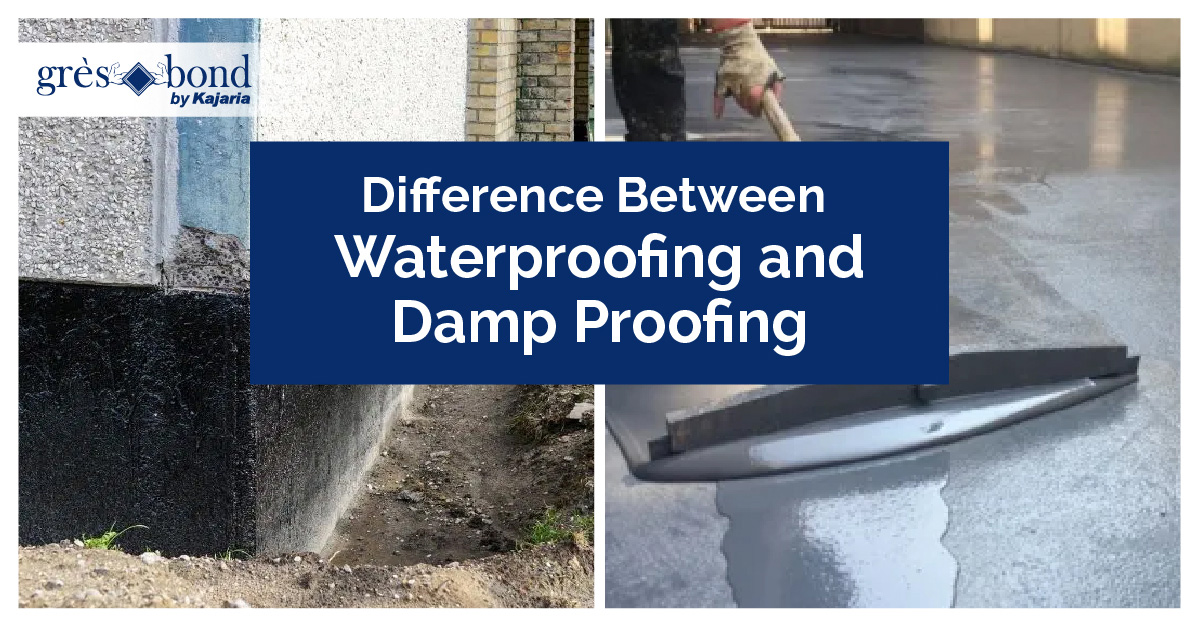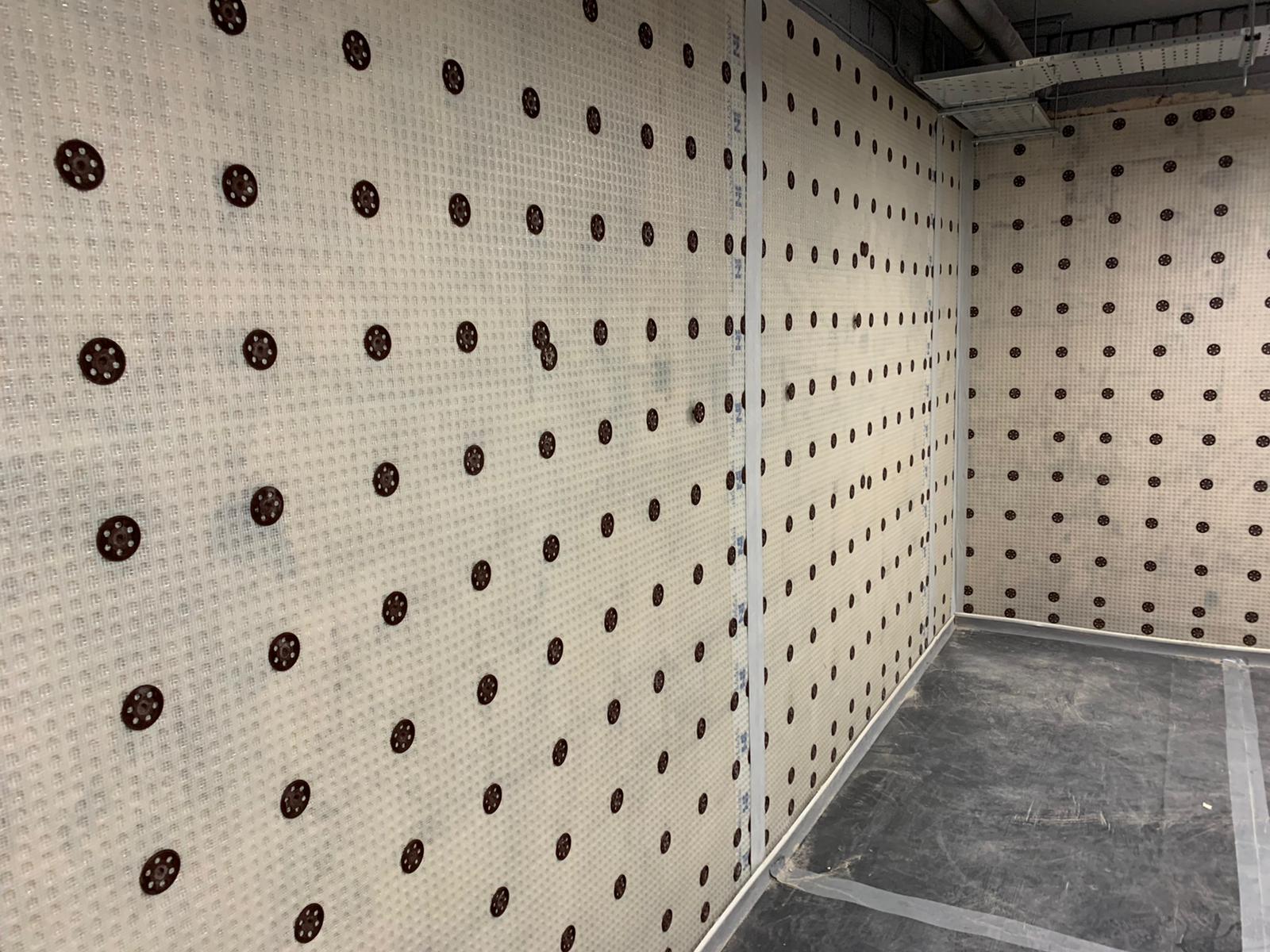How to identify early indicators of rising damp: A must-read for homeowners in damp proofing newcastle
How to identify early indicators of rising damp: A must-read for homeowners in damp proofing newcastle
Blog Article
Discovering the Various Techniques and Solutions for Effective Damp Proofing
Moisture in structures positions considerable obstacles to both structural stability and interior air top quality. Various strategies and services have emerged to fight this pervasive issue. From standard damp-proof membrane layers to cutting-edge chemical treatments, each method provides one-of-a-kind benefits. Recognizing these alternatives is vital for efficient moisture control. However, choosing the best remedy depends on specific building conditions and needs, prompting further exploration into one of the most reliable moist proofing methods offered.
Recognizing the Sources Of Wetness
Although moisture can occur from various sources, comprehending these causes is essential for efficient remediation. Frequently, wetness stems from 3 key resources: climbing damp, penetrating moist, and condensation. Rising wet occurs when groundwater takes a trip upwards via permeable products, such as block or rock, commonly because of an absence of an effective obstacle (damp proofing newcastle). Passing through moist is generally triggered by outside factors, consisting of roofing leaks, faulty gutters, or damaged walls, permitting water to infiltrate a home. Condensation, on the various other hand, results from excess moisture airborne, frequently exacerbated by bad ventilation and temperature level distinctions, resulting in water beads basing on surface areas. Recognizing these underlying problems is crucial, as each kind of wetness needs a customized method for removal. Correct evaluation helps in figuring out one of the most efficient options, inevitably protecting the architectural honesty of a building and enhancing indoor air high quality
Standard Damp-Proof Membrane Layers

Chemical Damp-Proofing Solutions
Chemical damp-proofing remedies offer a cutting-edge technique to avoid dampness breach in structures. These methods usually include the application of liquid chemicals that penetrate stonework and form a barrier against increasing damp. Generally made use of chemicals consist of silanes, siloxanes, and other water-repellent representatives that respond with surface materials to produce a hydrophobic layer.The application process normally requires drilling openings into the walls, infusing the chemical remedy, and permitting it to treat. This technique is especially helpful for older structures where traditional damp-proof membrane layers might be impractical. Chemical damp-proofing can be much less disruptive and more cost-efficient than substantial renovation projects.While reliable, these options depend on appropriate application and environmental problems for peak performance. damp proofing newcastle. Normal maintenance and surveillance are necessary to guarantee the long life of the damp-proofing treatment. Overall, chemical damp-proofing stands for a flexible alternative for protecting structures versus moisture-related damage
Dental Caries Wall Building Techniques
Tooth cavity wall surface construction techniques use numerous advantages, specifically in moisture control and energy efficiency. By including an air void between two layers of masonry, these wall surfaces successfully mitigate water access while enhancing insulation. This combination not just protects structures from dampness however also adds to lowered energy usage.
Benefits of Tooth Cavity Walls
When considering effective damp proofing approaches, the advantages of dental caries wall surfaces attract attention plainly. Dental caries wall surfaces contain two different layers, creating an air gap that efficiently reduces moisture penetration. This style lessens the risk of wetness, as the outer wall surface works as a barrier versus rainfall and water ingress. Furthermore, dental caries wall surfaces improve thermal insulation, which adds to energy performance by reducing heat loss. They additionally provide audio insulation, aiding to develop a quieter indoor setting. Moreover, the air space permits ventilation, which aids in dampness control and minimizes the chance of mold and mildew growth. These advantages not only boost the total comfort of a building but additionally add to its durability and structural integrity.
Moisture Control Strategies
Efficient dampness control techniques are essential in tooth cavity wall construction to ensure lasting security versus dampness. One main approach involves the consolidation of weep openings, which help with water drain from the cavity, avoiding buildup. Additionally, making use of breathable membrane layers can aid manage moisture levels while enabling entraped vapor to escape. Appropriate positioning of insulation is also important, as it should not obstruct drain courses. Guaranteeing that the external fallen leaves of the tooth cavity wall are built with water-resistant materials enhances total sturdiness. Normal upkeep checks are important to identify any type of blockages or damages early, securing the structure's honesty. Inevitably, a combination of these techniques develops a durable protection against moisture intrusion in cavity walls.
Insulation and Power Performance
Insulation plays an essential duty in boosting power efficiency within cavity wall construction. By including shielding products, these walls create a thermal barrier that minimizes warmth loss and minimizes power intake. Reliable insulation not only helps maintain a stable interior temperature however also alleviates the risk of dampness, as it protects against condensation within the wall dental caries. Various strategies, such as using stiff foam boards or mineral wool, can be utilized to achieve perfect insulation performance. Furthermore, proper installment is necessary to assure that spaces and gaps are lessened, which can otherwise jeopardize energy efficiency. Inevitably, a well-insulated tooth cavity wall surface contributes significantly to general sustainability and lowers heating and air conditioning prices for home owners.
Outside Damp Proofing Techniques
External wet proofing methods are essential for shielding frameworks from wetness seepage. Two reliable methods include the application of water resistant membranes and the installment of French more info drains. These solutions help minimize water accumulation and maintain the integrity of structures.
Waterproof Membrane Application
While different methods exist for stopping moisture access, the application of water-proof membranes stays a very reliable external moist proofing method. These membrane layers are usually made from products such as polyethylene, rubber, or changed bitumen, supplying a durable barrier against water penetration. The installment process involves applying the membrane layer to the external surface areas of walls or foundations, making certain complete coverage to stop leakages. Correct attachment and securing at joints are vital to maximizing efficiency. Waterproof membranes can be used in different kinds, including liquid finishes and sheet membrane layers, enabling versatility based on the particular demands of the structure. This approach not just safeguards buildings from moisture yet also boosts their long life and architectural honesty.
French Drainpipe Installation
One effective method for managing groundwater and avoiding moisture accumulation around a building's foundation is the setup of a French drain. This drainage system consists of a trench loaded with crushed rock and a perforated pipe that redirects surface area water away from the structure. Appropriate installment requires careful preparation, ensuring that the drainpipe inclines away from the structure to facilitate ideal water circulation. Additionally, the area of the drainpipe is important; it should be placed in locations susceptible to pooling or excess dampness. Routine upkeep, consisting of clearing particles from the crushed rock and guaranteeing the pipeline continues to be unhampered, is crucial for long-lasting performance. Inevitably, a well-installed French drain can significantly minimize the risk of water-related problems in foundations and cellars.
Interior Waterproofing Techniques
Interior waterproofing approaches are vital for securing a structure's inside from dampness seepage and possible water damage. These approaches normally involve the application of specific products and techniques made to produce a wetness barrier within the structure. One usual method is the use of water resistant finishings or sealers on walls and floorings, which prevent moisture from permeating surfaces.Additionally, setting up indoor drain systems, such as sump pumps, can properly take care of water accumulation in basements and crawl rooms. Another method includes using vapor barriers, which are installed to hinder dampness activity from the ground into living spaces.Moreover, resolving any type of fractures or voids in walls or foundations with suitable sealants ensures a thorough defense versus water breach. By implementing these interior waterproofing techniques, homeowner can substantially reduce the risk of mold development, structural damage, and other moisture-related issues. Proper execution of these strategies is essential for lasting defense and structure stability.
Routine Upkeep and Examination Practices
Routine maintenance and evaluation practices are vital for assuring the long-lasting efficiency of moist proofing solutions in any building. Routine checks enable homeowner to recognize very early indications of moisture breach, such as peeling off paint, mold development, and musty smells. These signs can signify underlying issues that need immediate attention.Inspections should be conducted at least every year, focusing on prone areas like cellars, crawl areas, and outside walls. Throughout these assessments, residential or commercial property proprietors should examine sealers, water drainage systems, and ventilation to confirm they function correctly.Additionally, keeping rain gutters and downspouts is crucial, as blocked systems can bring about water build-up near the foundation. Applying a regular upkeep schedule, together with prompt repair work, can considerably prolong the life-span of damp proofing procedures and shield the architectural integrity of the structure. Proactive actions ultimately add to the general health and wellness of the living environment.
Regularly Asked Questions
The Length Of Time Does Damp Proofing Normally Last?
The duration of damp proofing efficiency differs, typically lasting between 20 to 50 years. Aspects such as application top quality, environmental conditions, and upkeep techniques significantly affect the long life of the damp proofing treatment.

Can I Damp Evidence My Home Myself?
The private contemplated the expediency of DIY damp proofing. With appropriate research and the appropriate products, it is possible. However, they additionally acknowledged the value of expert advice to assure lasting effectiveness and prevent future issues.
What Are the Signs of Inadequate Damp Proofing?
Indications of inadequate moist proofing include consistent musty smells, visible mold and mildew growth, peeling off paint, moist spots on walls, and timber decay - damp removal newcastle. Home owners ought to resolve these problems promptly to avoid further damages and health and wellness problems
Does Damp Proofing Affect Indoor Air Quality?

Just How Much Does Specialist Damp Proofing Expense?
Professional damp proofing prices vary considerably, typically varying from $1,000 to $5,000 depending upon the home's size, the level of the moist issue, and picked methods. Each scenario requires a customized evaluation for accurate rates. Typically, wetness originates from 3 main resources: increasing wet, permeating damp, and condensation. When taking into consideration reliable wet proofing methods, the benefits of cavity wall surfaces stand out plainly. External wet proofing methods are crucial for protecting frameworks from moisture seepage. While numerous approaches exist for preventing wetness access, the application of water resistant membranes remains a highly reliable outside damp proofing method. Indications of inadequate moist proofing include relentless musty odors, visible mold growth, peeling paint, moist patches on walls, and timber decay.
Report this page